Kėdainiai - geographical center of Lithuania, part 1
Our first trip to Kedainiai - town in the geographical center of Lithuania, located about 50 km north from Kaunas. And our first walk through Kedainiai old town:

First of all short introduction of Kedainiai. This town is center of one of districts of Kaunas County. Between district centers of this country Kedainiai is rather big town (population slightly above 30000) and is important industrial center. There are several large industrial plants (chemical, food, biochemical, etc.).
Kedainiai were mentioned for the first time in 1372 in “Livonia chronicles”. At first growth of town was relatively slow. In the year 1520 it has 145 residential houses and 1160 residents. Rapid growth of Kedainiai began after 1535 when duke of Kedainiai Jonas Radvila became head of Samogitia land and Kedainiai became administrative center of Samogitia. In 1590 town got Magdeburg rights. Especially successful for town was first part of XVIIth century when Kedainiai were ruled by protest antic Radvila family representatives - Kristupas Radvila and his son Jonusas Radvila. These guys had big political ambitions, were most staunch reformation activists in Lithuania and introduced a lot of economic and cultural innovations. They invited many German, Scottish and Swedish merchants, catholic, Lutheran, Calvinist and even orthodox quarters aroused. Kedainiai became one of the largest and most important towns in Lithuania. Signs of all these activities are visible up to modern days.
Decline of town began after 1654-1660 wars with Russia and Sweden in which protestant Radvila branch were the losers and Catholics got final victory. Even worse was the first part of XVIIIth century. Plague and Nordic war ruined down this town. Later Kedainiai saw only moderate growth during second part of XVIIIth century and XIXth century. Heavy losses old town suffered after WWII when soviet planers altered whole quarters of old towns. During late soviet period Kedainiai old town floundered.
After 1995 Kedainiai saw some miracle. I still can’t understand how small town was able to restore rather big for its size old town. A combination of factors - very active municipality and mayor, state budget subsidies, private money - caused that. But today you could see entirely different Kedainiai than ten years ago…
Several days ago I had opportunity to spend several hours in Kedainiai. Weather was nice and warm as for the December and I made a short tour and prepared several reports. In first reports we will go through the old town, later through the other parts of Kedainiai. First of all I want to show oldest building in town - St.George church which was built in 1403 by crusaders. Geographically church isn’t in the old town but is located on the hill on the other side of Nevezis River:
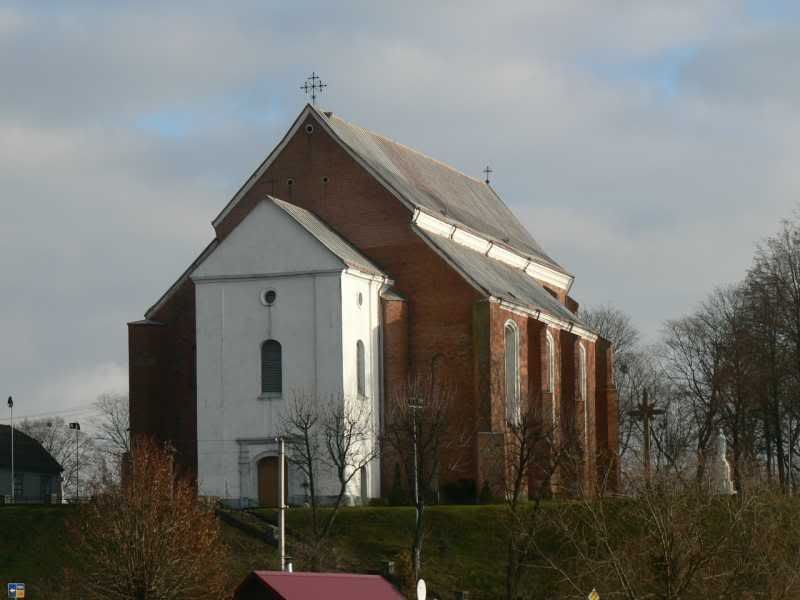
I like to come in to the old town from the northern side near the river. Small street is called Kranto and you could see several older houses from XIXth century that are rather typical for Lithuanian provincial towns. But in Kedainiai these houses are first signs of old town…
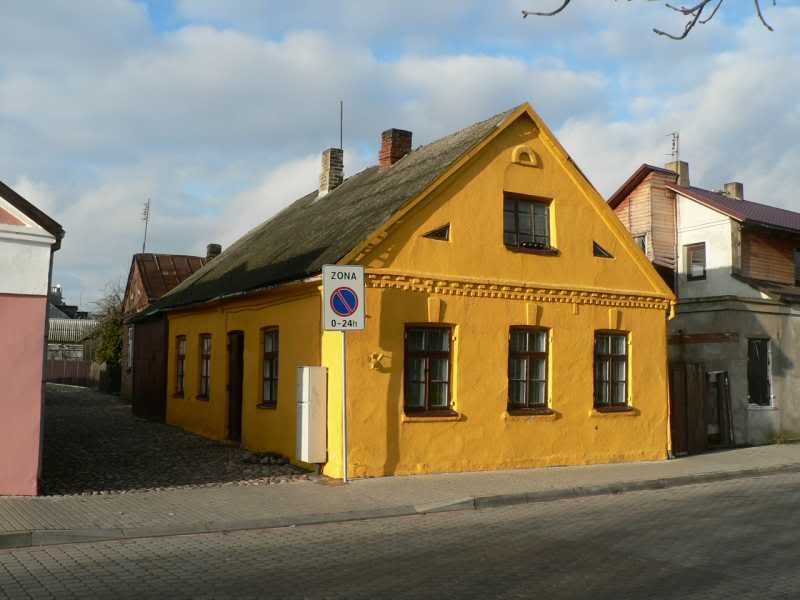
And then we come in into the square called Didzioji Rinkos - Big Market square and see a lot of houses from XVIth and XVIIth centuries on the norther, western and southern sides.
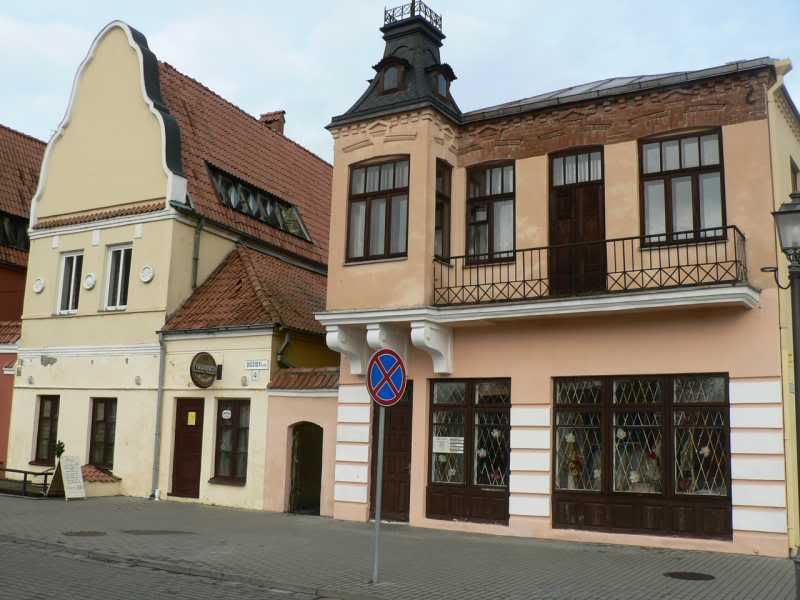
Glaziers houses from XVIIth century used as a tavern, hotel and glass works:
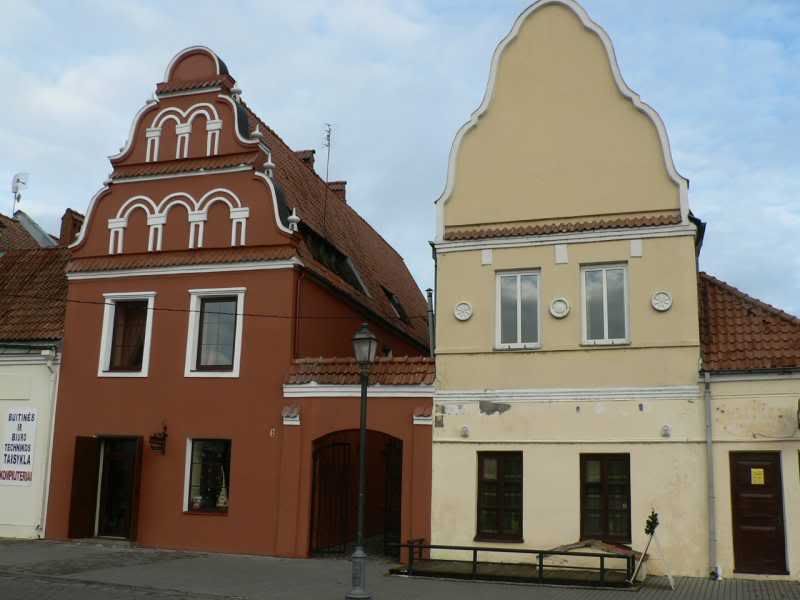

General view from southern corner and to the neighboring street:
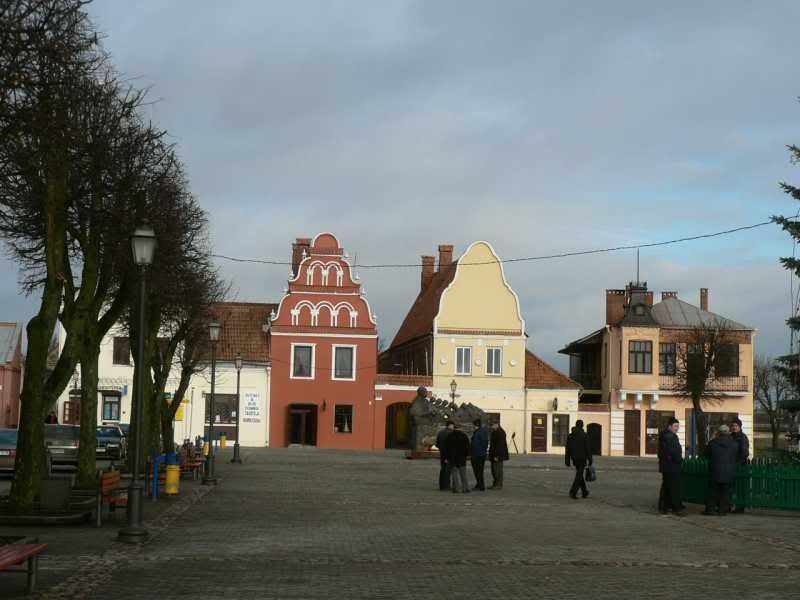
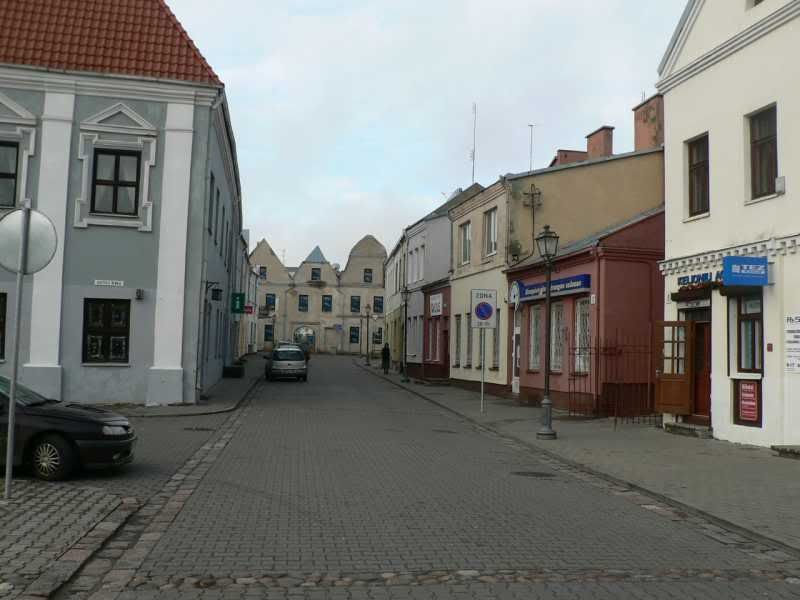
Monument to Radvila family:
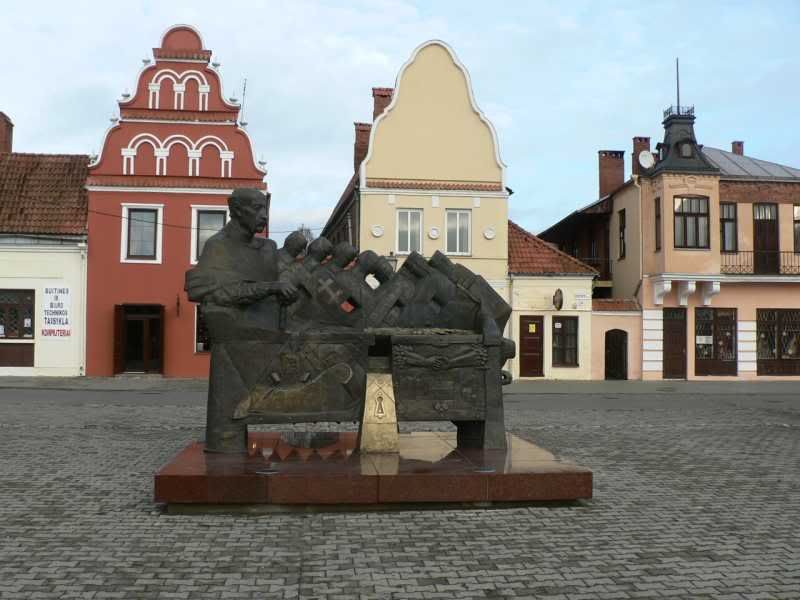
Kedainiai town hall (XVIIth century):
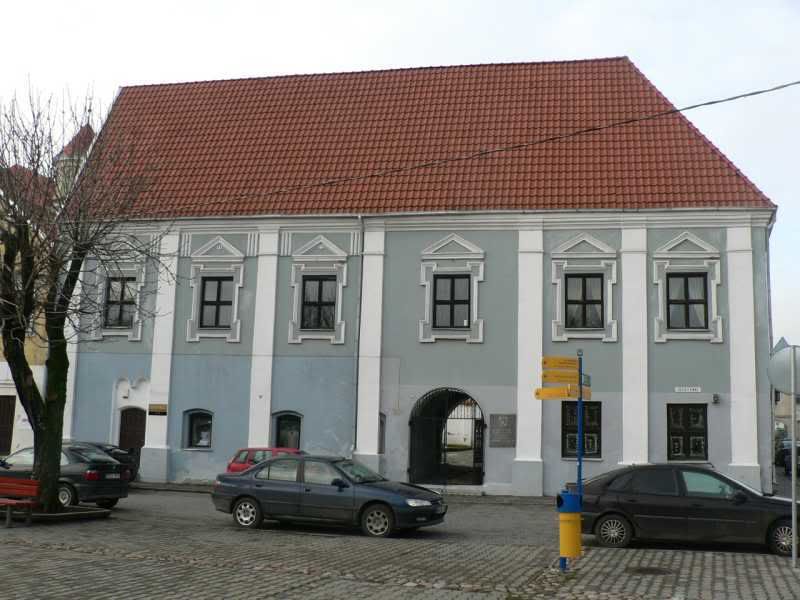
In the yard of town hall:
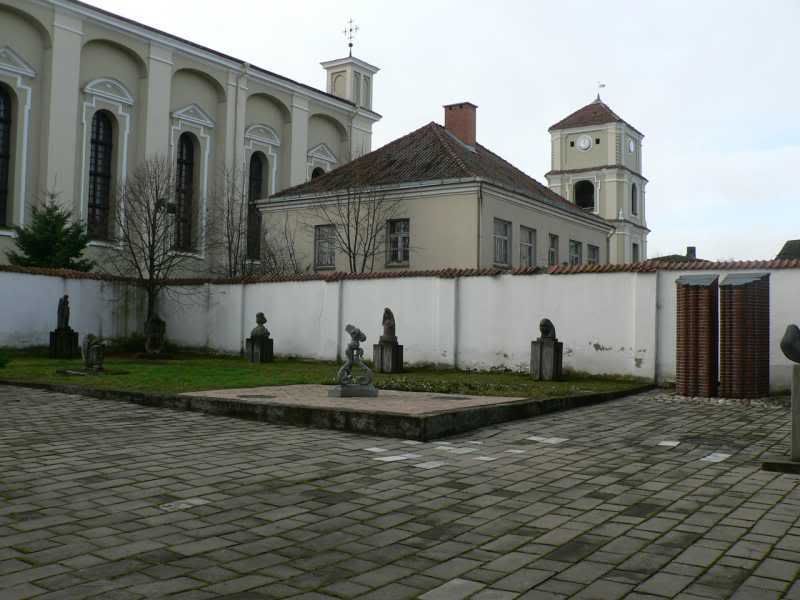
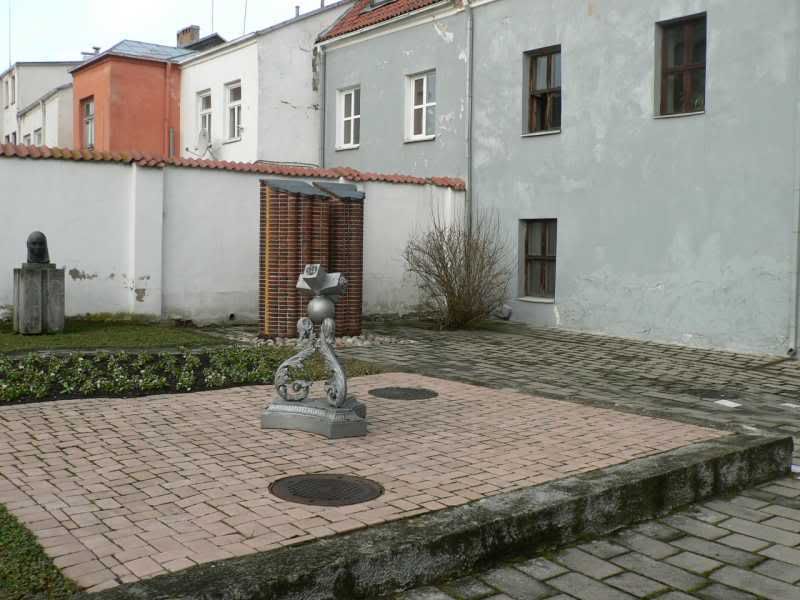
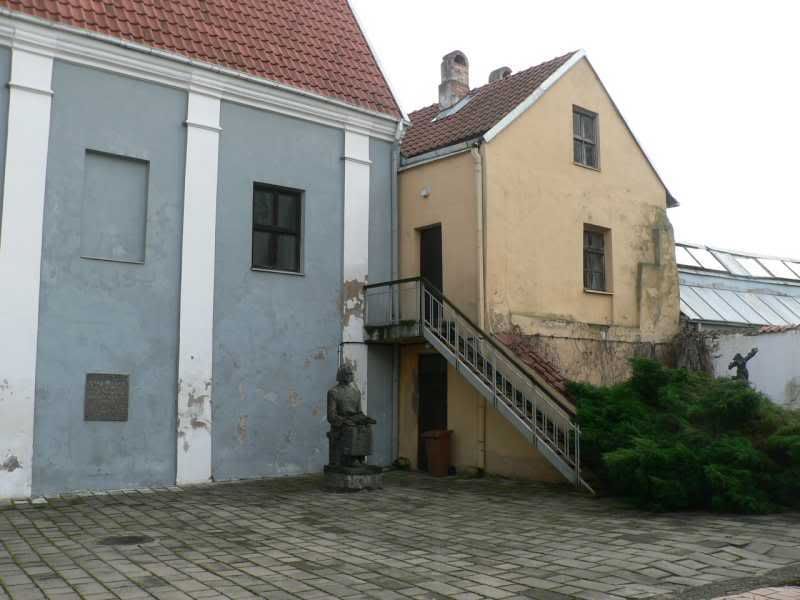
Monument to M.Dauksa, author of one of the first Lithuanian grammars:
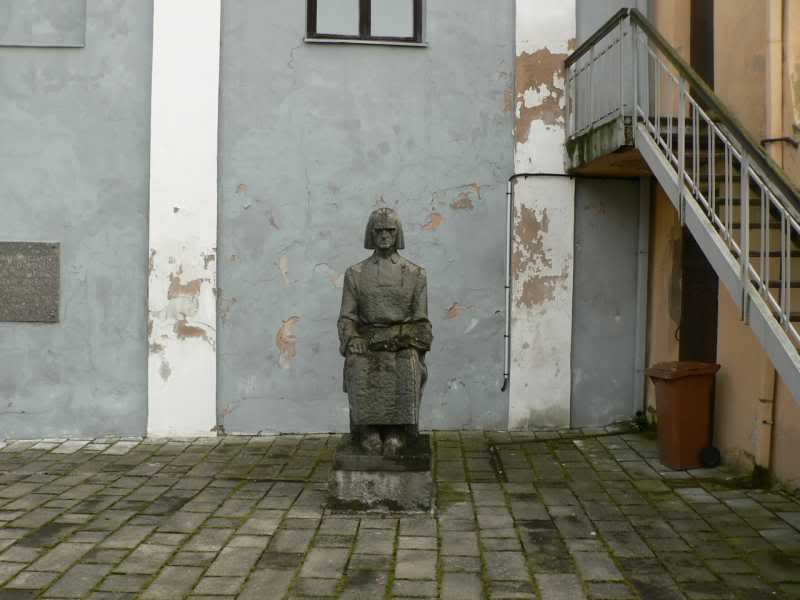
House of one of the first mayors of Kedainiai Scottish merchant Jurgis Andersonas (George Anderson) XVIIth century:
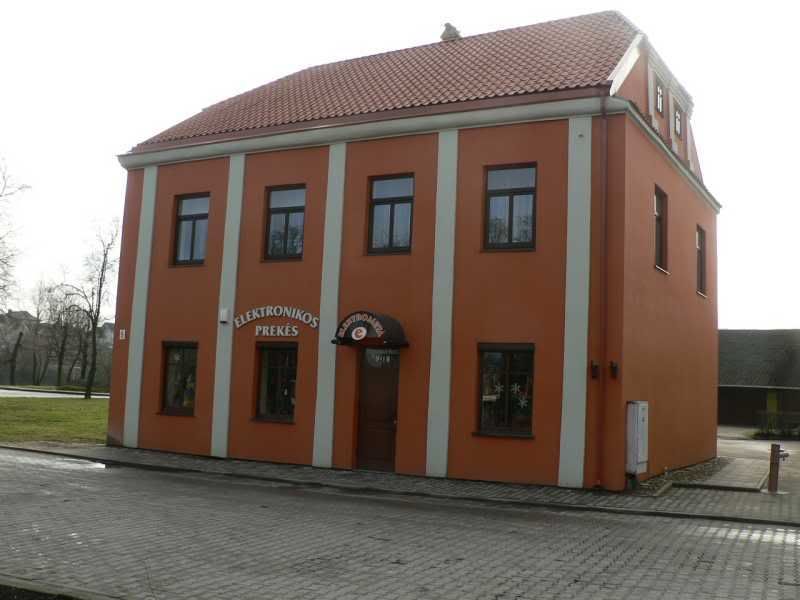
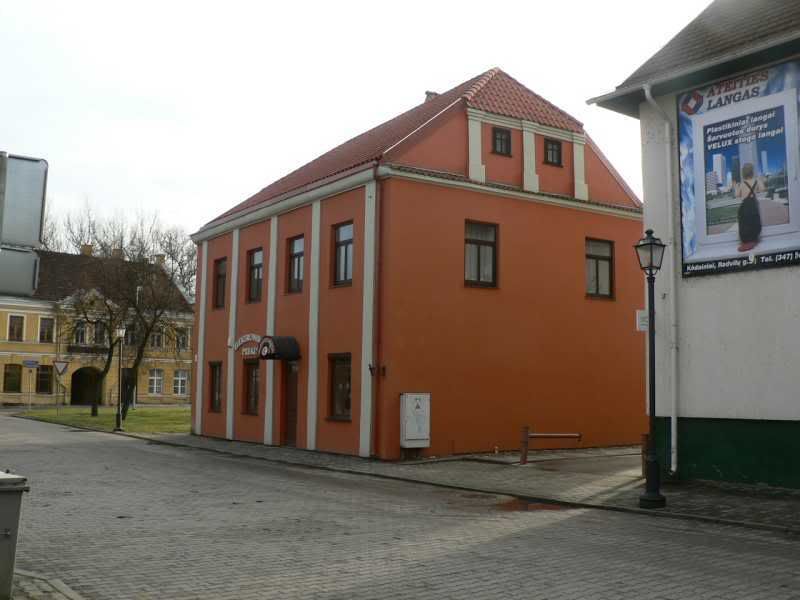
Behind the town hall is short Senoji (Short) street with several interesting buildings. Former house of Scottish merchant and craftsman Jurgis Benetas (George Bennet) also called Guild house (late XVIIth):
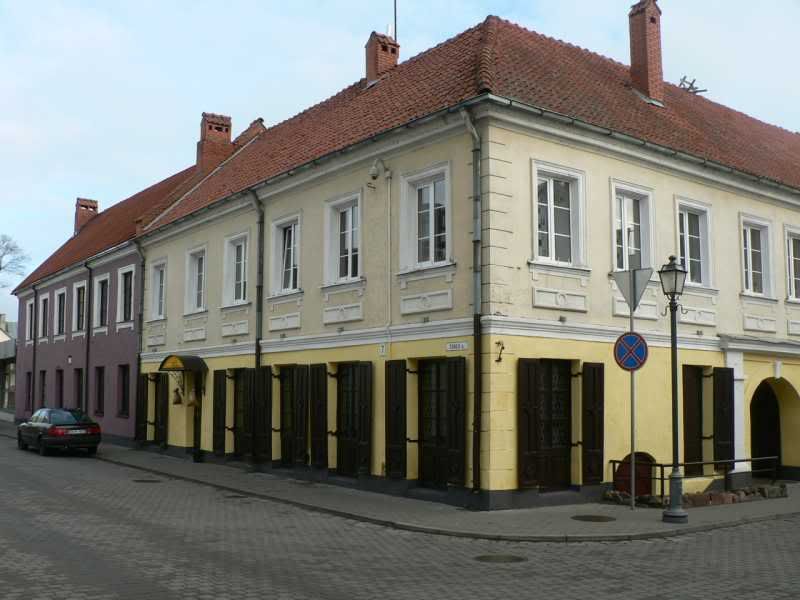
house next to him:
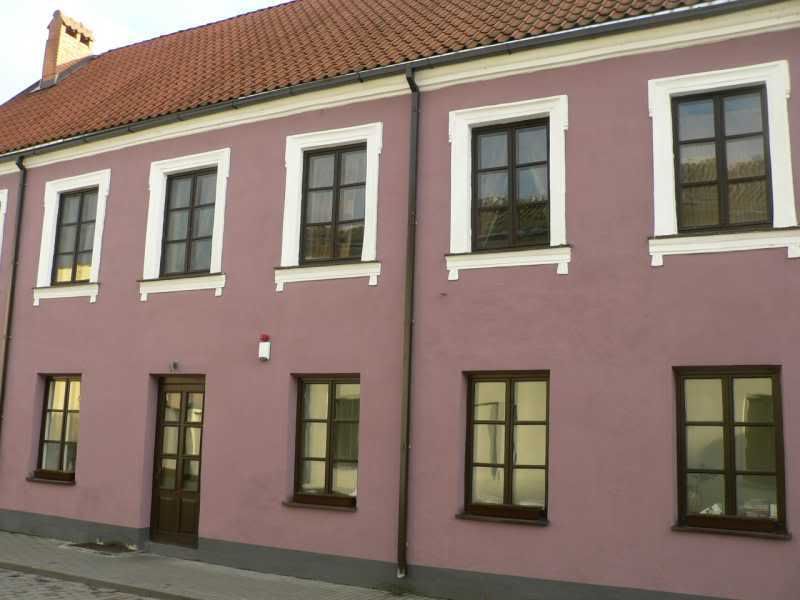
Belfry of Calvinist church and church itself (first church built in 1542, current built in 1653):
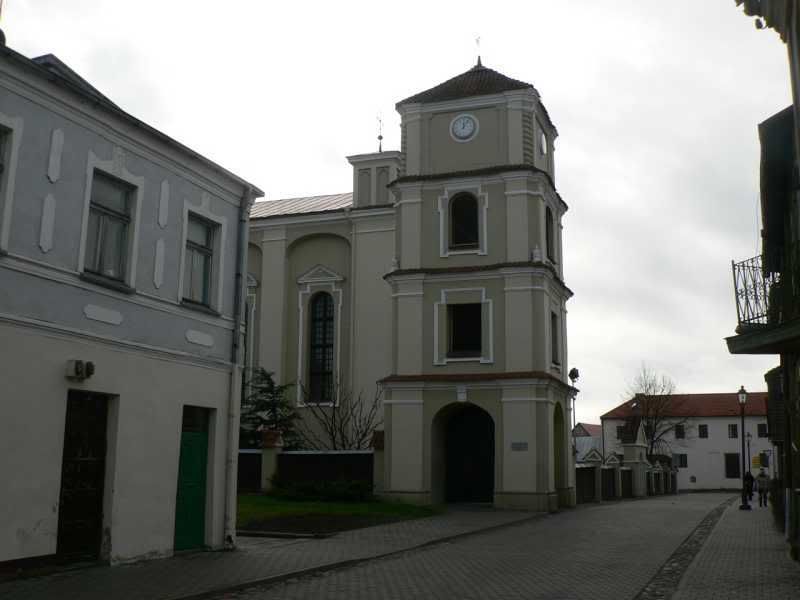
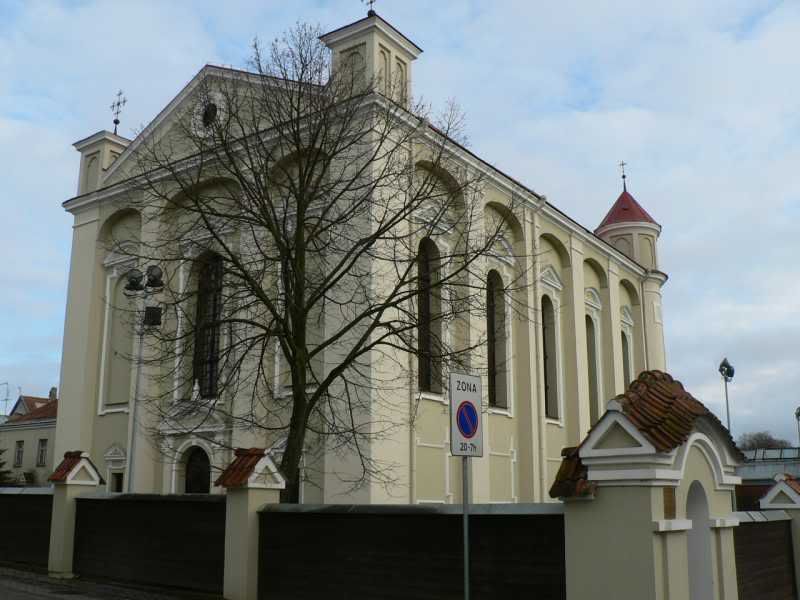
One of the former synagogues:
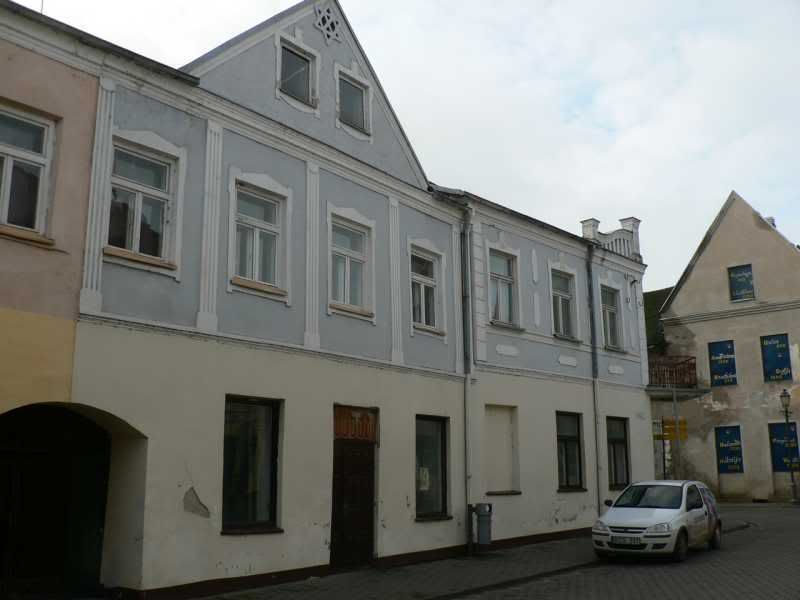
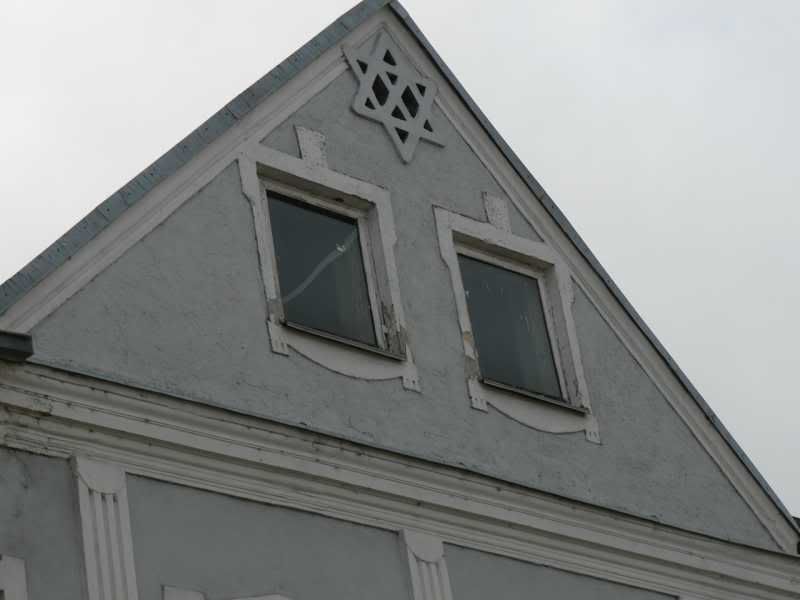
Strange house. It seems unfinished replica of old house.
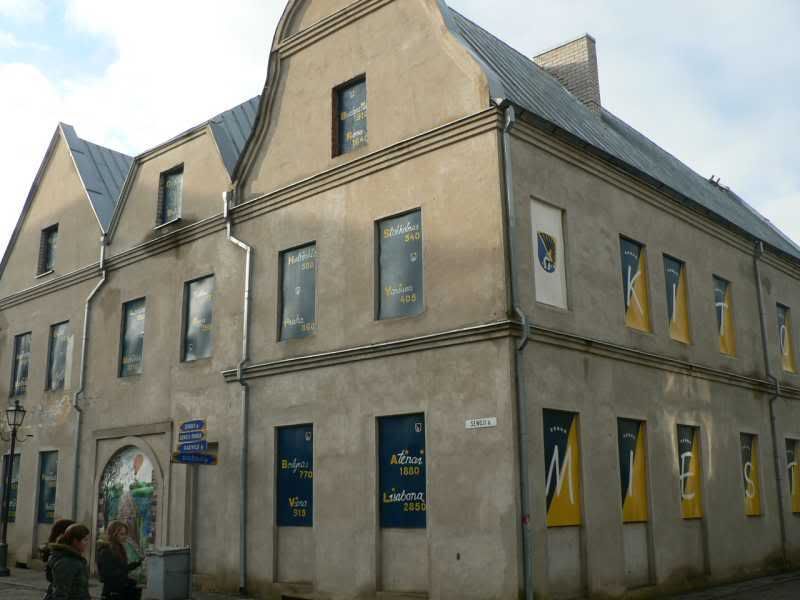
Typical house from XVIIth century:
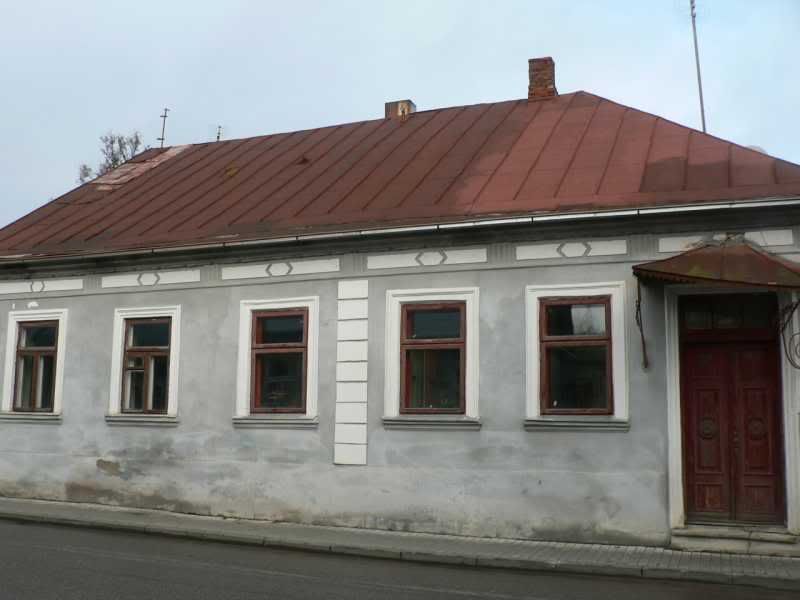
Finally we reached wooden Catholic Church of St.Joseph (built around 1747 and restored exactly the same in 1856):
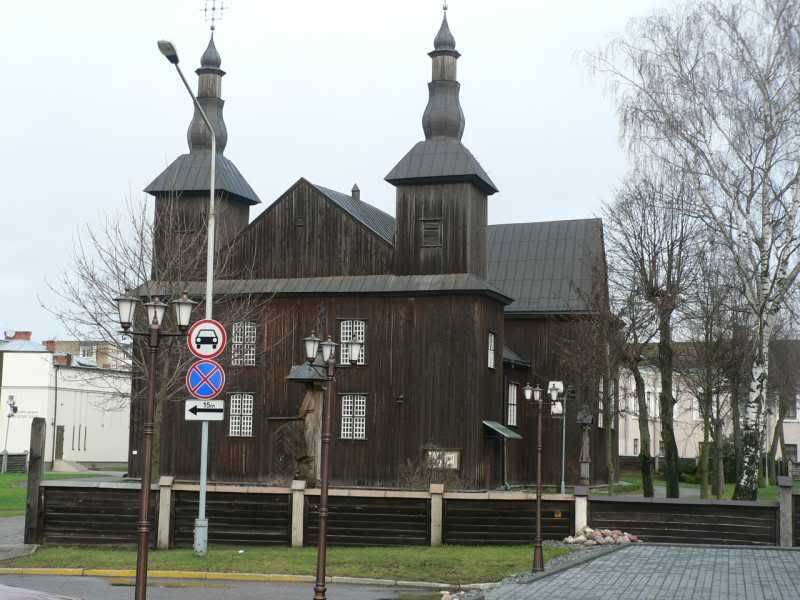
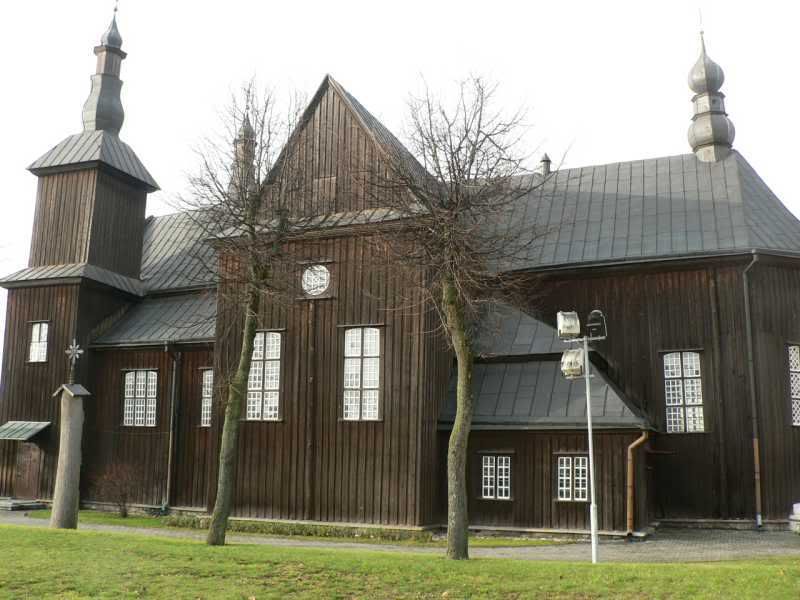
Modern funeral house nearby (in my opinion good example of modern architecture in old place):
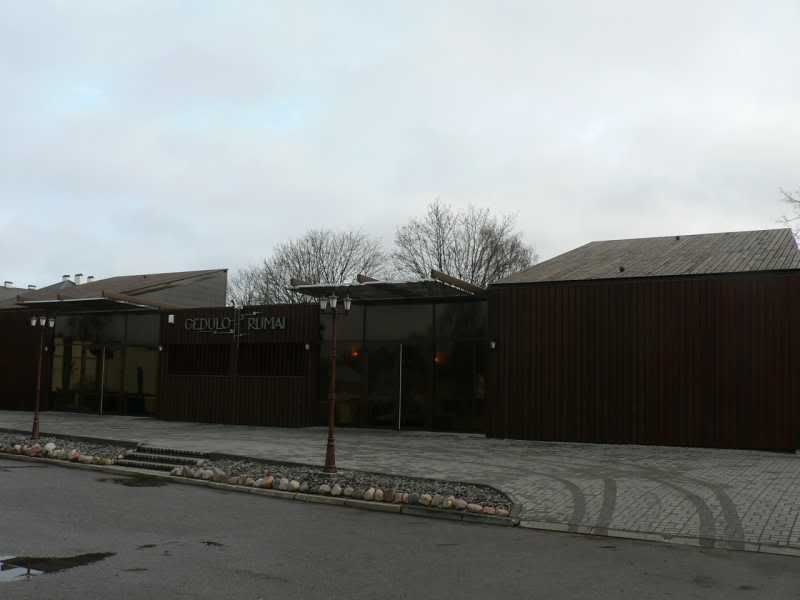
Now we are going back to the Big market square. Passing through the Senior house (or Scotsman Jonas Arnetas (John Arnet) house) from 1640s:
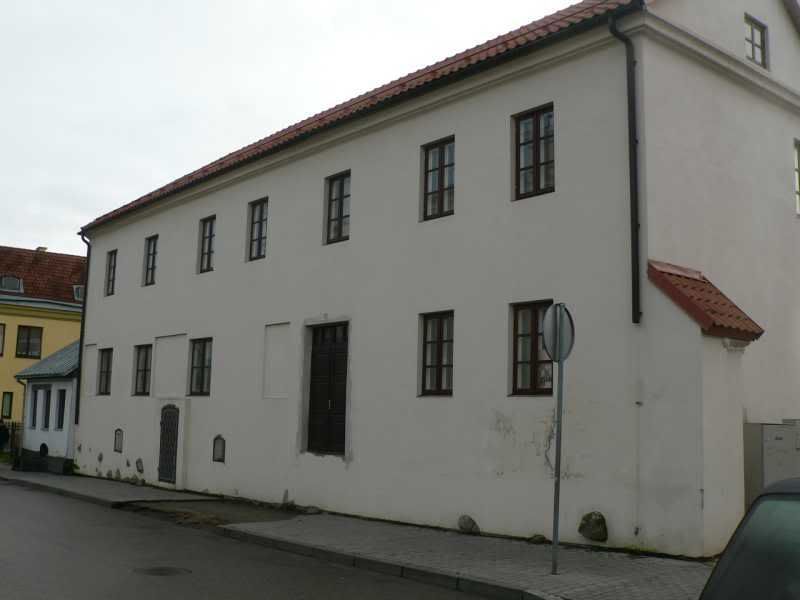
Backside:
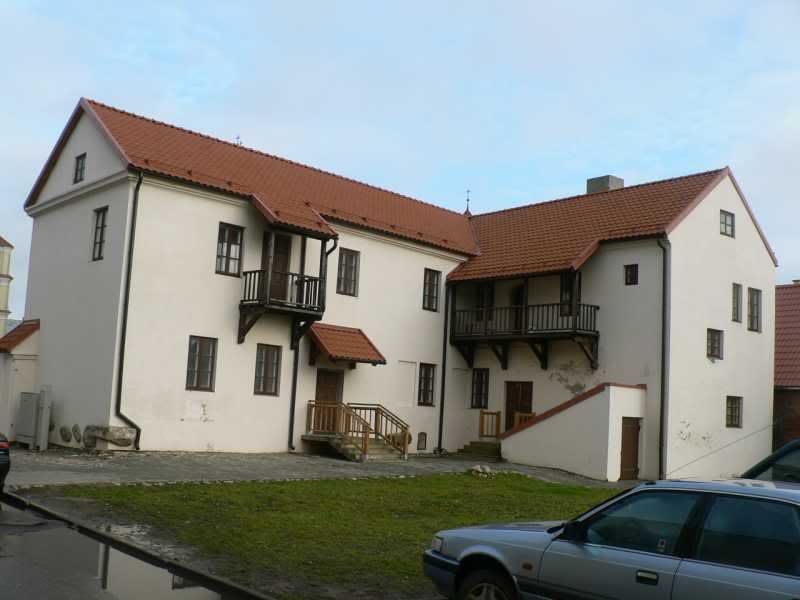
Old house near square:

Now we are back on Big market square and let’s look to the houses on eastern side. They are not so old but some of them are rather interesting:

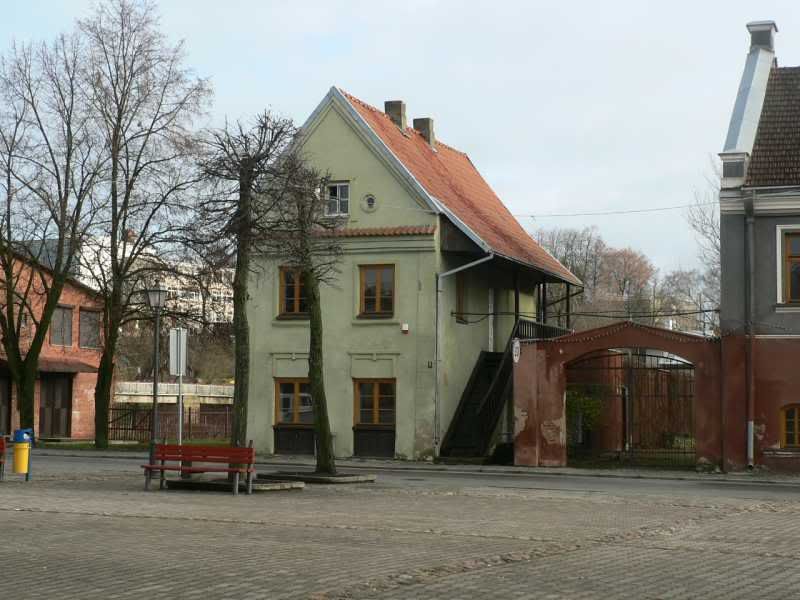
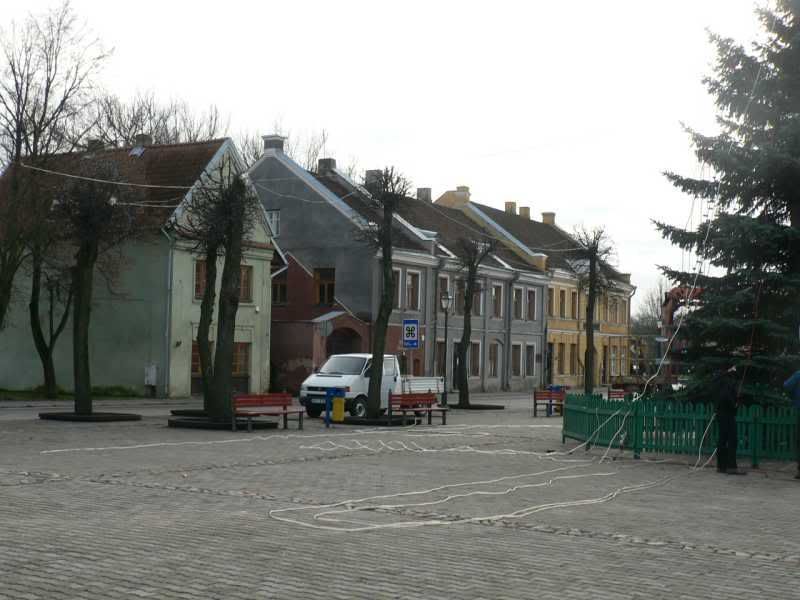
Going further to the south from Big market square we found several old industrial buildings like this fachwerk depot:
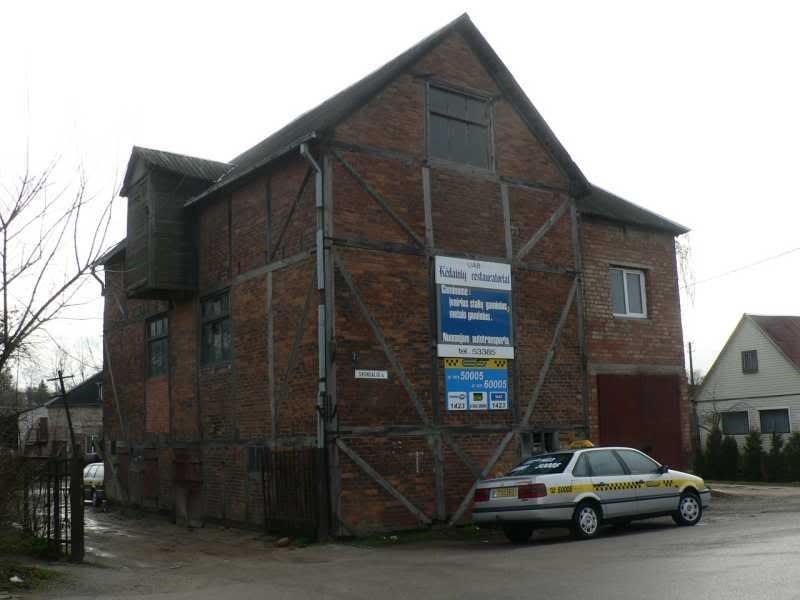
or this former mill:
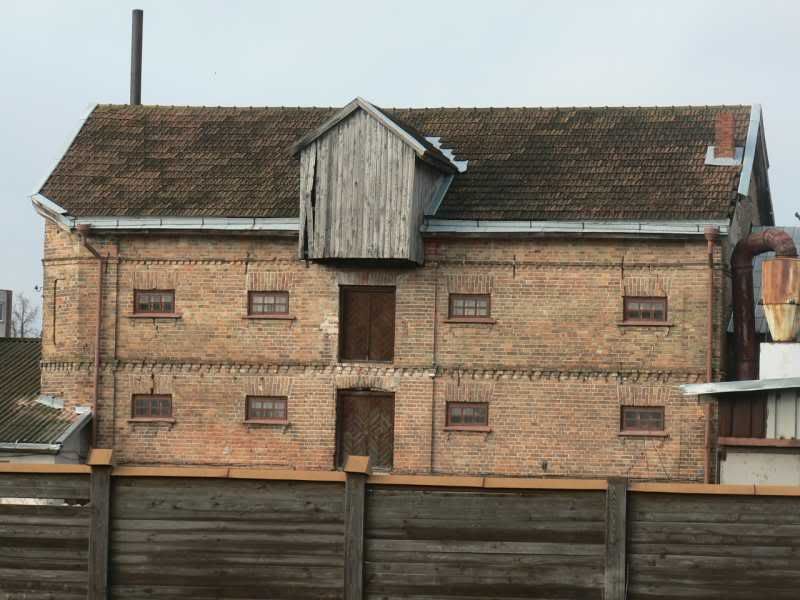
or this unknown buildings:
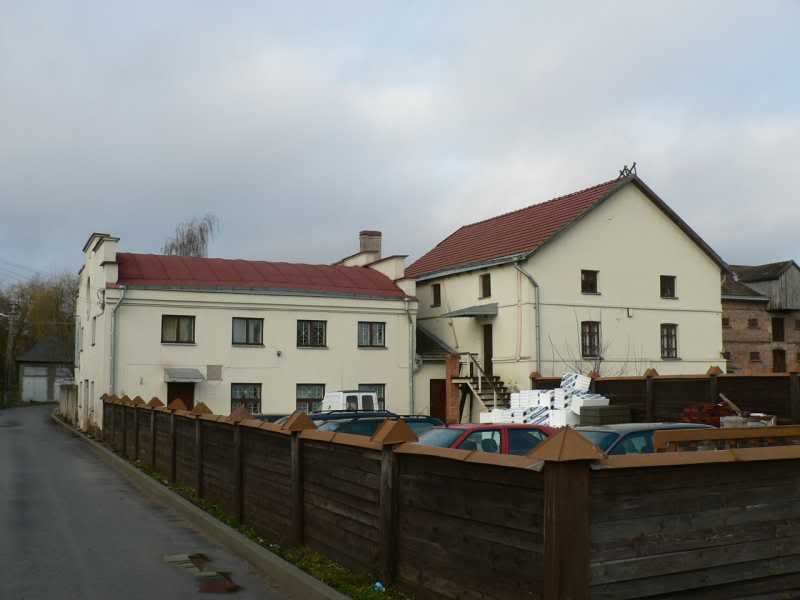
Now let’s make a break. And this is only our first walk through the Kedainiai old town J)

First of all short introduction of Kedainiai. This town is center of one of districts of Kaunas County. Between district centers of this country Kedainiai is rather big town (population slightly above 30000) and is important industrial center. There are several large industrial plants (chemical, food, biochemical, etc.).
Kedainiai were mentioned for the first time in 1372 in “Livonia chronicles”. At first growth of town was relatively slow. In the year 1520 it has 145 residential houses and 1160 residents. Rapid growth of Kedainiai began after 1535 when duke of Kedainiai Jonas Radvila became head of Samogitia land and Kedainiai became administrative center of Samogitia. In 1590 town got Magdeburg rights. Especially successful for town was first part of XVIIth century when Kedainiai were ruled by protest antic Radvila family representatives - Kristupas Radvila and his son Jonusas Radvila. These guys had big political ambitions, were most staunch reformation activists in Lithuania and introduced a lot of economic and cultural innovations. They invited many German, Scottish and Swedish merchants, catholic, Lutheran, Calvinist and even orthodox quarters aroused. Kedainiai became one of the largest and most important towns in Lithuania. Signs of all these activities are visible up to modern days.
Decline of town began after 1654-1660 wars with Russia and Sweden in which protestant Radvila branch were the losers and Catholics got final victory. Even worse was the first part of XVIIIth century. Plague and Nordic war ruined down this town. Later Kedainiai saw only moderate growth during second part of XVIIIth century and XIXth century. Heavy losses old town suffered after WWII when soviet planers altered whole quarters of old towns. During late soviet period Kedainiai old town floundered.
After 1995 Kedainiai saw some miracle. I still can’t understand how small town was able to restore rather big for its size old town. A combination of factors - very active municipality and mayor, state budget subsidies, private money - caused that. But today you could see entirely different Kedainiai than ten years ago…
Several days ago I had opportunity to spend several hours in Kedainiai. Weather was nice and warm as for the December and I made a short tour and prepared several reports. In first reports we will go through the old town, later through the other parts of Kedainiai. First of all I want to show oldest building in town - St.George church which was built in 1403 by crusaders. Geographically church isn’t in the old town but is located on the hill on the other side of Nevezis River:

I like to come in to the old town from the northern side near the river. Small street is called Kranto and you could see several older houses from XIXth century that are rather typical for Lithuanian provincial towns. But in Kedainiai these houses are first signs of old town…

And then we come in into the square called Didzioji Rinkos - Big Market square and see a lot of houses from XVIth and XVIIth centuries on the norther, western and southern sides.

Glaziers houses from XVIIth century used as a tavern, hotel and glass works:


General view from southern corner and to the neighboring street:


Monument to Radvila family:

Kedainiai town hall (XVIIth century):

In the yard of town hall:



Monument to M.Dauksa, author of one of the first Lithuanian grammars:

House of one of the first mayors of Kedainiai Scottish merchant Jurgis Andersonas (George Anderson) XVIIth century:


Behind the town hall is short Senoji (Short) street with several interesting buildings. Former house of Scottish merchant and craftsman Jurgis Benetas (George Bennet) also called Guild house (late XVIIth):

house next to him:

Belfry of Calvinist church and church itself (first church built in 1542, current built in 1653):


One of the former synagogues:


Strange house. It seems unfinished replica of old house.

Typical house from XVIIth century:

Finally we reached wooden Catholic Church of St.Joseph (built around 1747 and restored exactly the same in 1856):


Modern funeral house nearby (in my opinion good example of modern architecture in old place):

Now we are going back to the Big market square. Passing through the Senior house (or Scotsman Jonas Arnetas (John Arnet) house) from 1640s:

Backside:

Old house near square:

Now we are back on Big market square and let’s look to the houses on eastern side. They are not so old but some of them are rather interesting:



Going further to the south from Big market square we found several old industrial buildings like this fachwerk depot:

or this former mill:

or this unknown buildings:

Now let’s make a break. And this is only our first walk through the Kedainiai old town J)